Thames / Thornton Bay
Good morning late sunshine
We woke up to blue sky – but no
sun, as the mountain behind us is so tall that we didn’t get sun until after 9
am – I guess that is the downside of the beautiful sunsets. After having a
relaxing start, we were ready to head out for a bit.
I may should mention we saw today
the most amazing sign which said “Slow the!%$ down”.
The Square Kauri tree
We headed up the bay – same road we
came down yesterday: beautiful ocean views – narrow roads – then we turn off
and literally drive into the jungle, we stopped at the water gardens but then
decided that we saw so many cool gardens that we don’t think it is worth to pay
for this one. That means we only take a picture of the nice old car nearly
buried between the plants and continue on: this time on gravel road (did I
mention that Paul cleaned the car yesterday!!).
We found the parking spot and then
go on our 175m long walk: the fun part is that it is nearly only steps up and
up and up (this made the 175m seem longer) and then suddenly we stand right in
front of this massive Kauri tree: which is said to be 1200 years old – that
means the tree was here before the Maori’s arrived and was already 900 years
old when Captain cook arrived…. How cool is that!!
We see some other big Kauri trees
too – once back on the road we walk up a bit and look back and see there towers,
we can this huge massive Kauri tree. And from up here we can even see the
ocean.
On the way down, we stop at one
time at a super cool bridge and you also have the option to drive through the
river!!!
Relaxtime at Tapu Beach
On the way back we pull out at
Tapu Beach here they have nice picnic tables, some trees and nice views on the
ocean or lets say the bay. On this side of the Peninsula along the bay the
water looks greenish and also a bit murky – when the tide goes out you can see
how muddy it is underneath and not sandy. It is amazing to look at – but not so
inviting for swimming and we can see a lot of people fishing here.
Paul has a nap in the shade – Gine
goes for a walk and discovers a lot of the oyster diggers – when they fly, they
have beautiful black and white wings looking amazing. It is a super pretty
beach.
The arrows on the road:
- So why are there arrows on the road in which direction to drive????
- They are often used on roads at intersections, where frequently visitors come, on large bridges – where divided roads revert to two-way with centre lines
- It is especially if the number of crashes involved are with people with overseas licences (maybe they should convert to the right side driving)
The huge tree in Waiomu
- This tree only grows in New Zealand and those huge gnarled trees are only found on the North Island
- The leaves of this tree have waxy coating that protects them from the salt
- The trees can grow huge and the branches spread out wide covering big areas: they can grow 20m tall but more amazingly up to 50 m wide!!! The older trees are always wider than tall
- Some of the older trees have huge drooping of aerial roots which hang in masses from the branches – and interestingly some trees grow a lot and others none – some of those aerial roots never even reach the ground (weird)
On the way back we pull out in
Waiomu, this is a freedom camping site and here is a huge tree the well-known
Pohutukawa tree – what was so cool with this one, it was not only huge but also
had all those roots hanging down from the massive limbs – when you walk
underneath it you feel like you are in a forest inside a tree – we found it
super amazing.
Along here we saw some more super
old “Bachs” which are likely from the 1940s and some of them look like they
need a lot of TLC. We head back and it is time for a coffee – and then we head
out again.
Thames – the historic cemetery
This time we head in the other
direction and drive down towards Thames:
- By the way Thames was named by Captain James Cook as it remined him of the River Thames in England
Before even coming to town, we had
to stop as someone put an old railroad cart there and converted it into a house
– and we thought that was so cool – definitely worth to check it out.
Our first stop in town, was the Shortland
Historic Cemetery. (we missed the other historic cemetery as the road is so
narrow and there is no way to park unless you jump into the ocean)
- It was used as a cemetery since 1869 and records are kept since 1870 (around 80 burials are not accounted)
- As where some lived to an old age: there was a nurse she worked in the hospital during the fly pandemic in 1918 and then got sick herself and died on it, a man was scalded to death after an explosion in a battery, another one died in an accident in the mine, one man died with 32 suffocated by gas in the mine (not a very healthy and safe environment): Mine workers death was prevalent from silicosis (lung exposure to quartz dust) and mine accidents
- In 1870 from the 117 people dying, 41 were children under 1 year (that did not include the stillbirths), as well 11 women under 35 years. One of the ministers wrote in his diary in 1873, that he mourns the death of the children as 21 of his last 27 burials were children he attended, as well later on his own daughter who died of scarlet fever in 1876
- One family with three sons dying wrote on the gravestone “one by one they cross the river
It is on a hill and the view down
on the Bay is amazing, we only saw one small area of the cemetery as it is
huge, there are some amazing head stones and it tells a bit the story of the
town. It is interesting to walk through see some of the big head stones, read
some of them, as where others are so deteorated, you can’t read anything
anymore, sometimes the whole graves are collapsed.
From here we were heading through
the main road of the town, where there are a lot of old buildings, it was fun
to see them and a few had even the date on it on how old they are – it feels a
little bit like in a western frontier town. We did have to stop as we could see
a bakery and they are selling apple tumblers with real cream – guess we do have
desert tonight.
- Gold was discovered at the Driving Creek in 1852 and 300 people rushed here, then in 1867 Gold was discovered in Thames attracting 5000 men and soon after Thames became the boom town and the population mushroomed to 18.000 miners, at that time it had over 100 hotels: one of them is the Imperial Hotel and it is still a hotel today and There are still a lot of the old dinky houses left
We are like the Kiwis – on
holidays
We headed back to a second coffee
and a lazy day on our porch – perfect to relax and enjoy the views on the ocean…
as well we went into the Air NewZealand webpage to make sure we have window
seats flying to and from the Cook Islands – which was not that simple – it took
us forever!!!!
Sunsets over the ocean are
amazing
And then tonight we had another
amazing sunset – how beautiful… we so love it (that means Gine more than Paul)
I may should mention that Paul
cleaned again the car!!!!

 Thornton Bay, Waikato, New Zealand
Thornton Bay, Waikato, New Zealand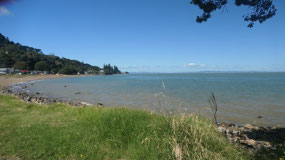
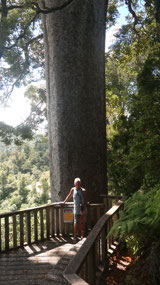
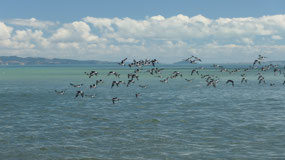
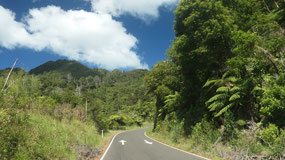

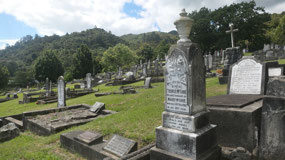
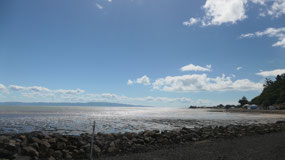
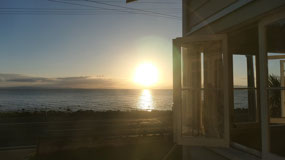



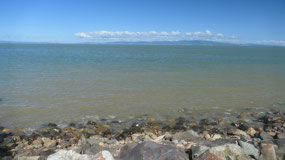
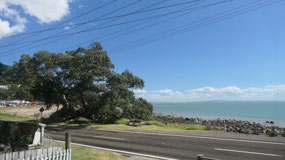
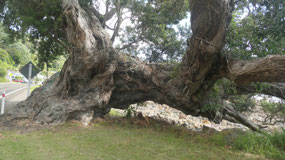
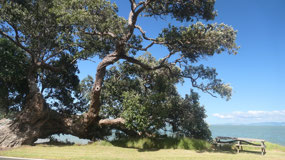
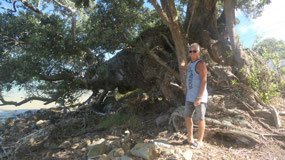
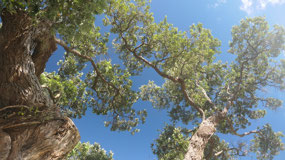

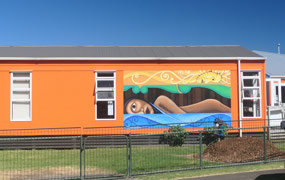
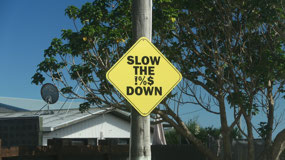
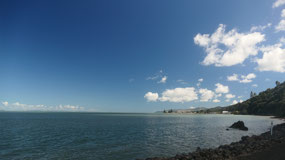
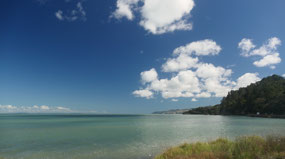
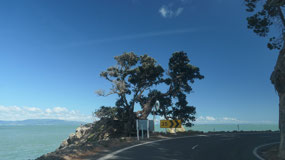
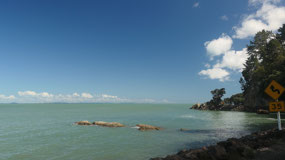
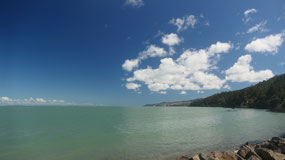

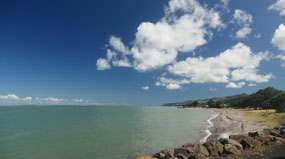
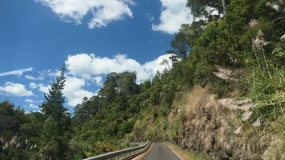
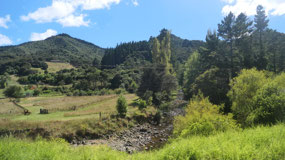
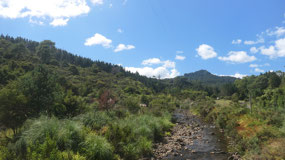
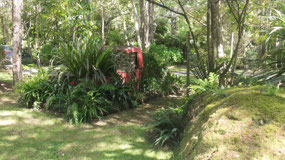
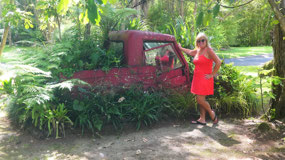
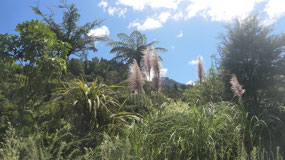
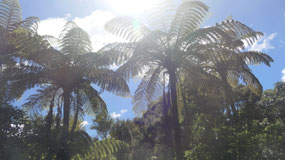
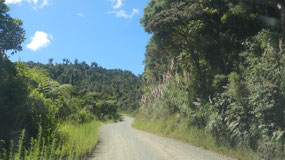

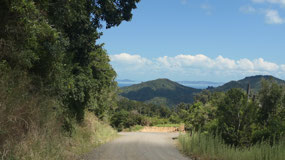
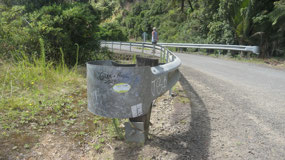
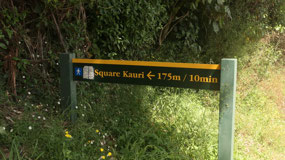

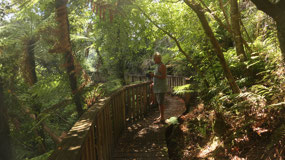
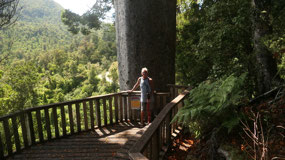

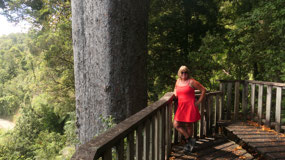
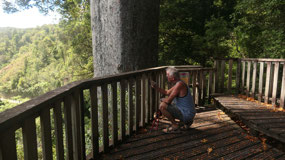
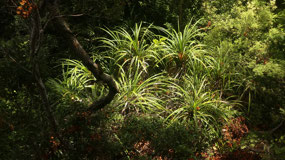
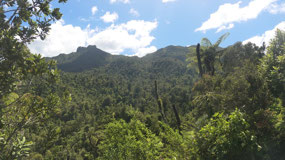
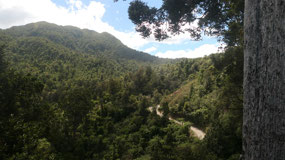
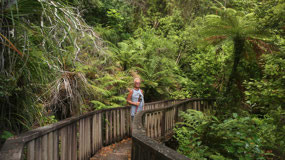
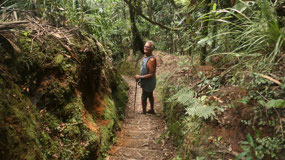
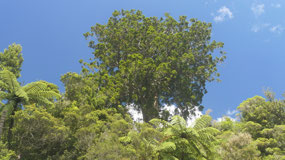
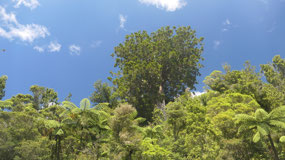
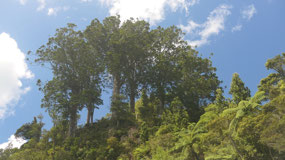

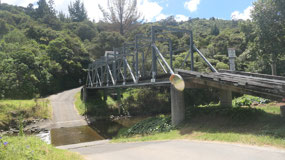
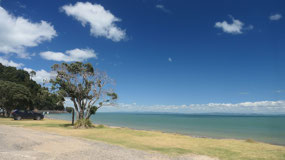
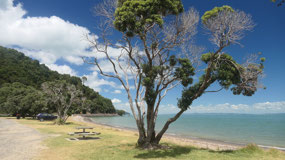
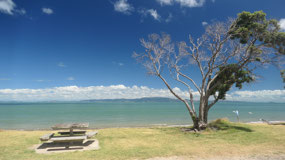
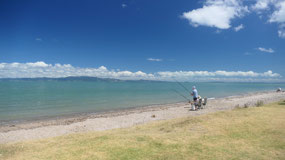
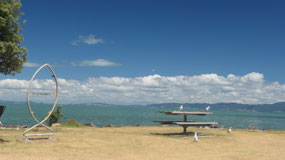
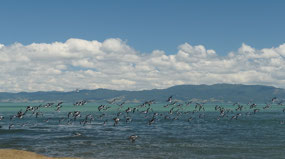
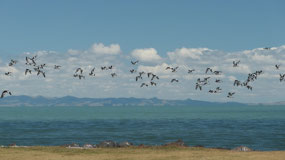
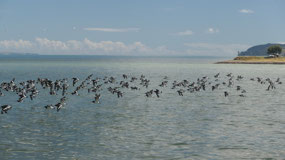
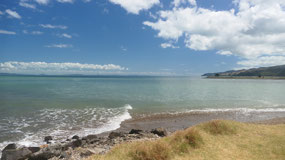
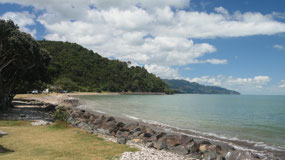
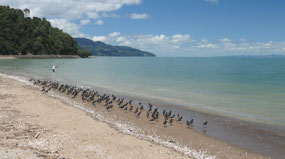
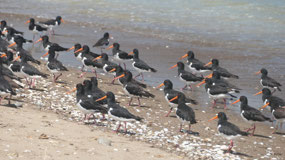
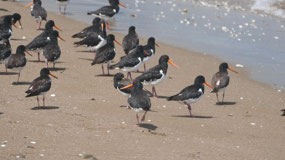
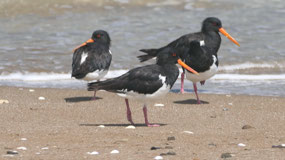
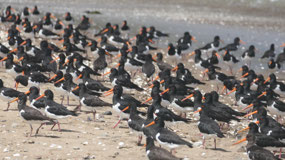
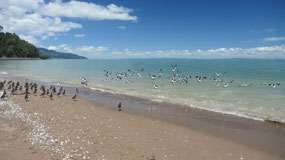
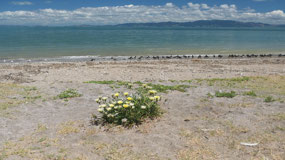
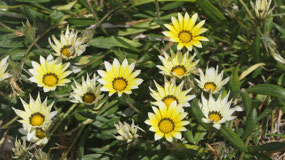
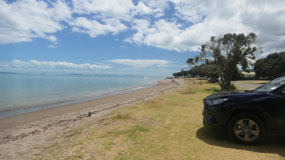
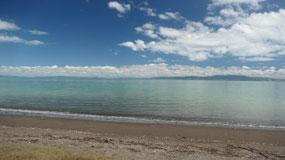
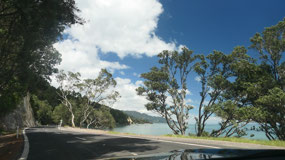
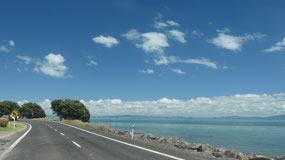
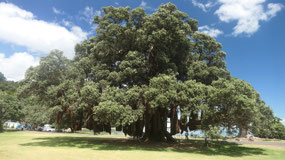
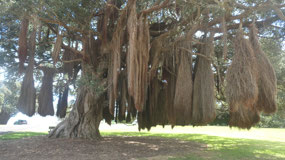
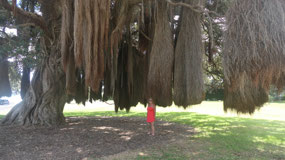
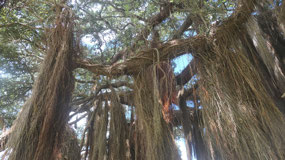
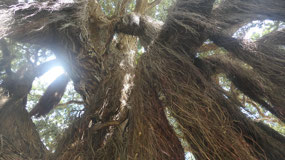
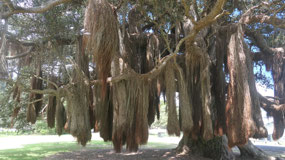
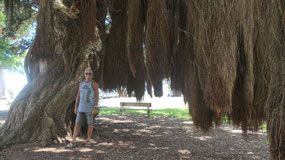
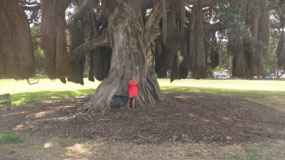
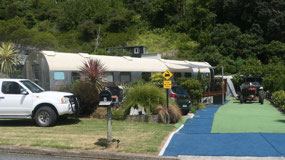
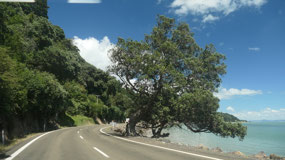
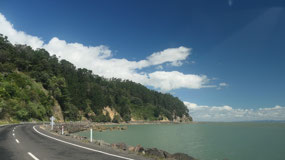
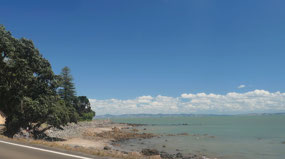
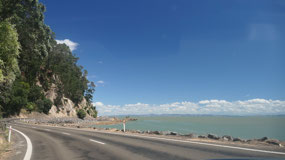
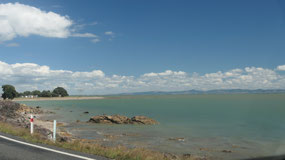

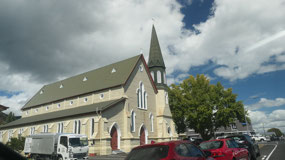
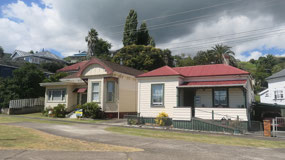
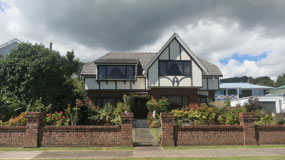
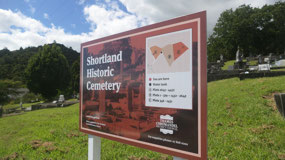
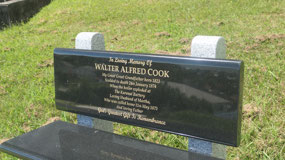
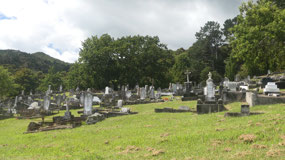
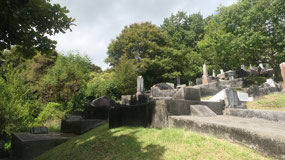
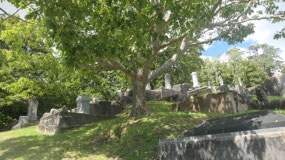
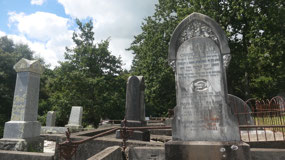
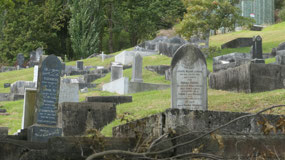
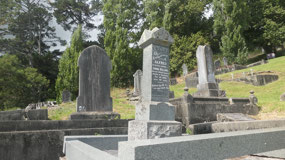
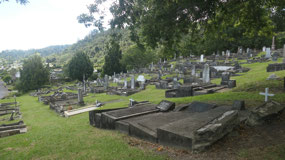
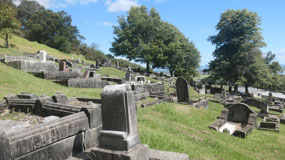
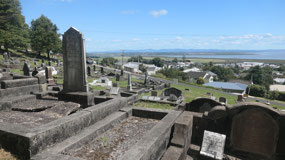
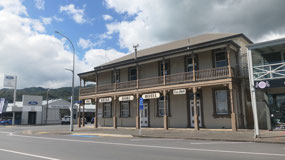

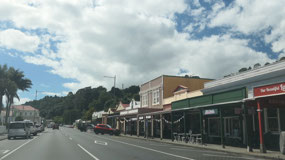
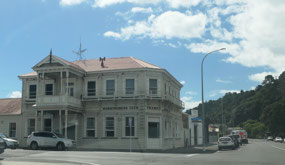
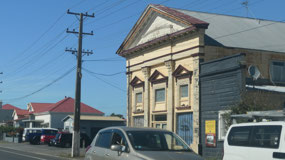
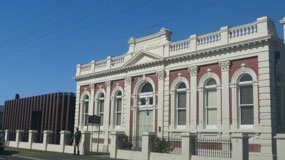
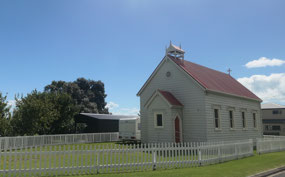
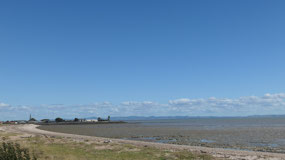
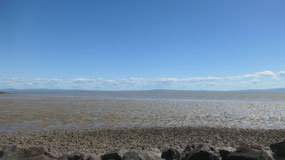
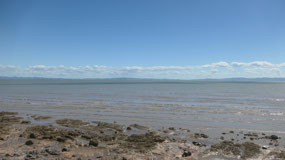
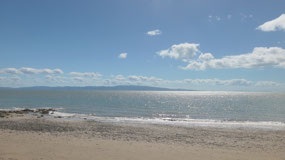

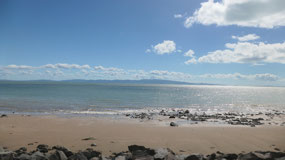
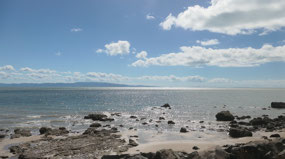
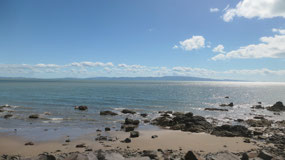
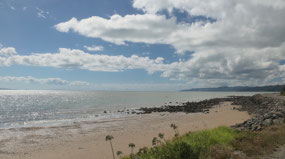

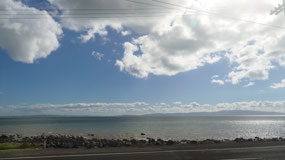

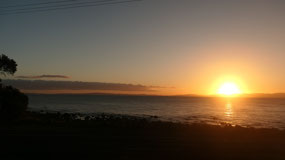
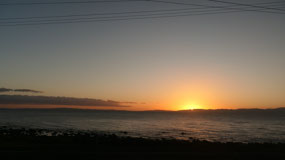
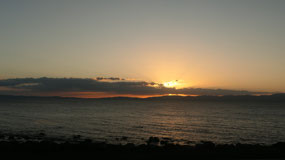
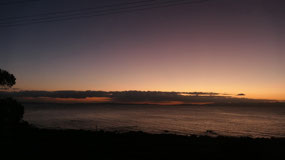
2025-05-23